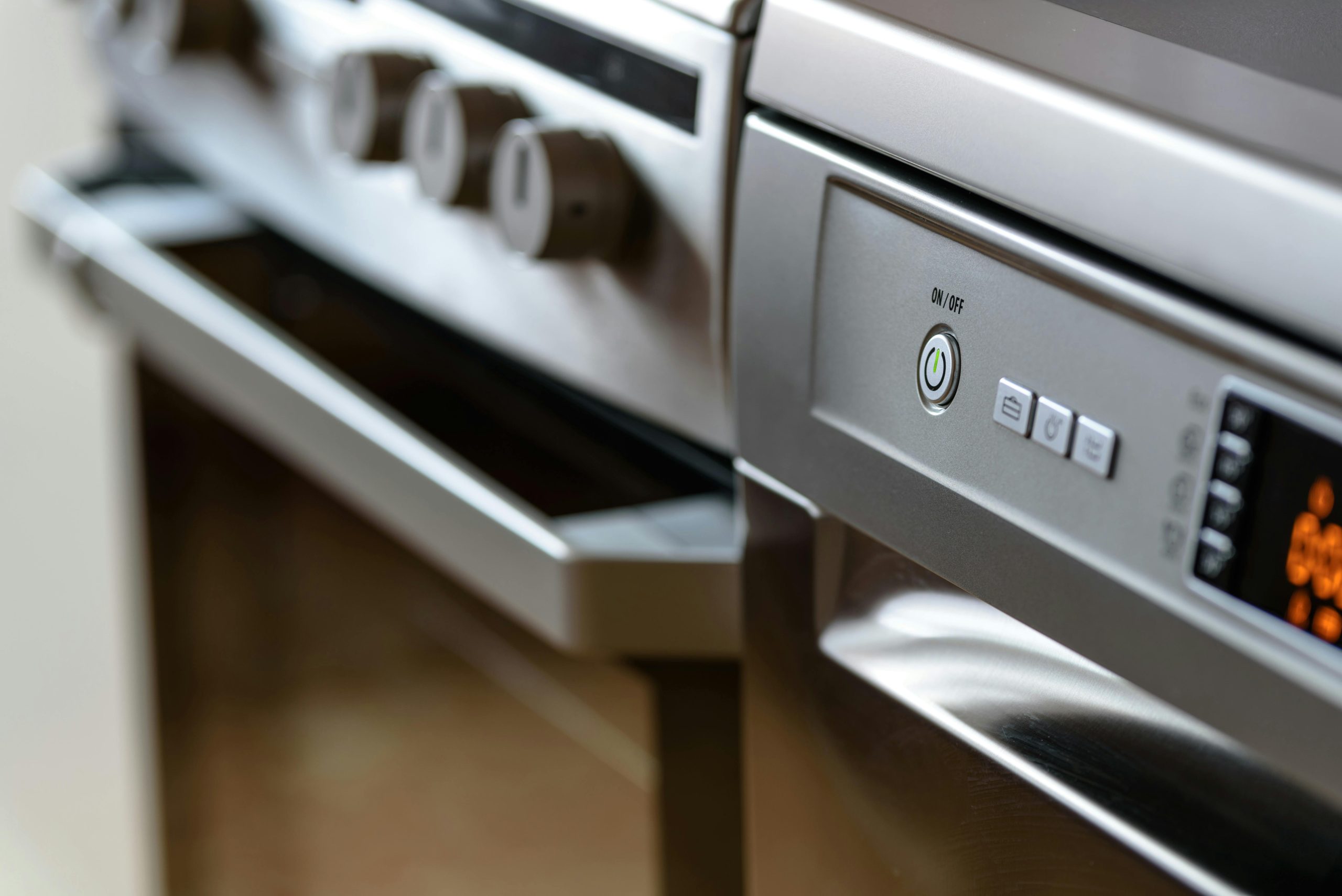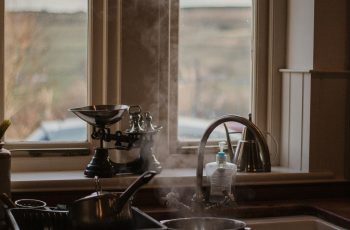Ad Blocker Detected
Our website is made possible by displaying online advertisements to our visitors. Please consider supporting us by disabling your ad blocker.
Are you tired of spending countless hours scrubbing your pressure cooker after each use? If so, you may be wondering if it is safe to pop it in the dishwasher for a quick and convenient clean. In this article, we will explore whether or not pressure cookers are dishwasher safe, giving you the answer you’ve been searching for. So, say goodbye to laborious hand washing and let’s find out if your pressure cooker can join you in the dishwasher for a hassle-free cleaning experience.

What is a Pressure Cooker
A pressure cooker is a kitchen appliance that is designed to cook food quickly and efficiently by utilizing high pressure steam. It consists of a pot with a sealed lid and a valve that controls the release of steam. Pressure cookers are known for their ability to cook food up to 70% faster than traditional cooking methods, making them a popular choice for busy individuals who want to save time in the kitchen.
Overview of pressure cookers
Pressure cookers come in various sizes and designs, but they all operate on the same principle of creating a sealed and pressurized environment to cook food. They work by heating liquid inside the pot, such as water or broth, which produces steam. As the steam builds up, it raises the pressure inside the cooker, which increases the boiling point of the liquid. This higher temperature helps food cook faster and allows flavors to infuse more quickly.
The sealed lid of the pressure cooker prevents steam from escaping and creates a high-pressure environment. This pressure forces moisture into the food, resulting in tender and flavorful dishes. The valve on the lid allows excess steam to be released, maintaining the desired pressure level. Once the cooking is complete, the pressure can be safely released, and the food can be enjoyed.
Dishwasher Safety
Importance of dishwasher safety
Dishwashers have become an essential part of modern kitchens, offering convenience and efficiency in cleaning dishes. However, when it comes to pressure cookers, it is important to understand the safety considerations when using a dishwasher. Ensuring dishwasher safety is crucial to prevent damage to the pressure cooker and to maintain its optimal performance.
Materials that are dishwasher safe
Not all pressure cooker parts are dishwasher safe, and it is important to check the manufacturer’s instructions before placing any components in the dishwasher. Typically, the pot and some accessories, such as the steamer basket and trivet, are dishwasher safe. However, the lid, gasket, and pressure release valve often need to be hand-washed to avoid potential damage.
Potential risks of dishwasher cleaning
Cleaning a pressure cooker in the dishwasher can pose some risks if not done properly. The heat and water pressure in the dishwasher may affect the pressure cooker’s components, such as the gasket or the valve, potentially causing them to deteriorate or malfunction. This can compromise the safety and performance of the pressure cooker. Therefore, it is important to understand the specific dishwasher safety guidelines provided by the pressure cooker manufacturer.
Pressure Cooker Components
Understanding pressure cooker parts
To effectively clean a pressure cooker, it is essential to understand its various components. The main parts of a pressure cooker include the pot, lid, gasket, pressure release valve, and handles. Each component plays a crucial role in the functioning of the pressure cooker and requires specific care and maintenance.
The pot is where the food is cooked, and it should be made of durable and heat-resistant materials. The lid seals the pot and ensures a pressurized cooking environment. The gasket is a rubber or silicone ring that creates an airtight seal between the pot and the lid. The pressure release valve controls the release of steam, allowing pressure to build up inside the cooker. Lastly, the handles provide a safe grip for handling the pressure cooker.
How materials affect dishwasher safety
The materials used in the construction of a pressure cooker can impact its dishwasher safety. Stainless steel is a common material used for pressure cooker pots due to its durability and heat resistance. Stainless steel is generally dishwasher safe, but it is still essential to refer to the manufacturer’s guidelines to ensure proper care.
Other materials, such as non-stick coatings or certain types of plastics, may not be dishwasher safe and require handwashing. The high temperatures and abrasive detergents used in dishwashers can damage these materials, compromising their safety and longevity. It is crucial to check the manufacturer’s instructions to determine which components can be safely cleaned in the dishwasher.
Manufacturer Instructions
Reading the user manual
When it comes to pressure cooker safety and maintenance, it is important to read the user manual provided by the manufacturer. The user manual contains specific instructions regarding dishwasher safety, cleaning methods, and any precautions that need to be taken. It is essential to familiarize yourself with these guidelines to ensure the longevity, performance, and safety of your pressure cooker.
The user manual will provide detailed information on which components are dishwasher safe and which ones need to be hand-washed. It will also outline any specific cleaning procedures to follow, including recommended cleaning agents and precautions to prevent damage. Following the manufacturer’s instructions is crucial to maintain the warranty of the pressure cooker and ensure its safe and efficient use.
Following the manufacturer’s recommendations
Manufacturers design their pressure cookers with specific dishwasher safety guidelines, and it is important to follow these recommendations to prevent any potential damage. While some pressure cooker components may be labeled as dishwasher safe, others may require handwashing. It is important not to deviate from the manufacturer’s instructions to maintain the integrity of the pressure cooker and prevent any compromising of its safety features.
Different pressure cooker models and brands may have different dishwasher safety guidelines, so it is essential to refer to the specific instructions provided by the manufacturer. By following these recommendations, you can ensure that your pressure cooker remains in optimal condition and continues to deliver delicious meals.

Common Pressure Cooker Types
Different types of pressure cookers
Pressure cookers come in various types, each with its own unique features and advantages. The most common types of pressure cookers include stovetop pressure cookers, electric pressure cookers, and multi-cookers that combine pressure cooking with other functions, such as slow cooking or rice cooking.
Stovetop pressure cookers are designed to be used on a stovetop burner and are typically made of durable stainless steel or aluminum. Electric pressure cookers, on the other hand, are standalone appliances that have built-in heating elements and digital controls for easy operation. Multi-cookers offer the versatility of multiple cooking functions in one appliance, making them a popular choice for those who want a single appliance that can handle various cooking tasks.
Specific dishwasher safety considerations for each type
Each type of pressure cooker may have specific dishwasher safety considerations due to the different materials and construction. Stovetop pressure cookers made of stainless steel or aluminum are generally dishwasher safe, but the lid, gasket, and pressure release valve may need to be hand-washed to prevent any potential damage.
Electric pressure cookers and multi-cookers often have non-removable components, such as the lid and gasket, which may require special care. It is important to check the user manual for specific instructions on cleaning these types of pressure cookers. Following the manufacturer’s recommendations is essential to maintain the optimal performance and safety of your pressure cooker.
Pros and Cons of Dishwasher Cleaning
Advantages of dishwasher cleaning
Using a dishwasher to clean your pressure cooker can offer several benefits. First and foremost, it provides convenience, as you can simply place the dishwasher-safe components in the dishwasher and let it do the work for you. Dishwashers also use high water temperatures and detergents, which can effectively remove stubborn stains and residues from the pressure cooker.
Furthermore, dishwasher cleaning helps sanitize the pressure cooker, as high temperatures kill bacteria and other microorganisms. This can be especially beneficial when cooking foods that require careful handling, such as meats and poultry. Dishwasher cleaning can save time and effort, allowing you to focus on other tasks in the kitchen.
Disadvantages and limitations of dishwasher cleaning
While dishwasher cleaning may offer convenience, there are some disadvantages and limitations to consider. Not all pressure cooker components are dishwasher safe, and it is important to carefully review the manufacturer’s recommendations. Using the dishwasher for non-dishwasher safe parts can lead to damage or deterioration, compromising the safety and performance of the pressure cooker.
Dishwasher cleaning may also have limitations when it comes to removing stubborn stains or residues. Some food particles may require additional scrubbing or soaking to be fully removed, which may not be accomplished through dishwasher cleaning alone. Additionally, the high water temperatures and detergents used in dishwashers may affect certain materials, such as non-stick coatings or plastic handles.

Handwashing vs. Dishwasher Cleaning
Comparing handwashing and dishwasher cleaning
When it comes to cleaning a pressure cooker, there are two main methods: handwashing and dishwasher cleaning. Handwashing involves manually cleaning the pressure cooker components using warm water, mild detergent, and a non-abrasive sponge or cloth. Dishwasher cleaning, on the other hand, relies on the dishwasher’s water pressure, high temperature, and detergent to clean the pressure cooker parts.
Handwashing allows for more control over the cleaning process, as you can pay attention to specific areas that may require extra scrubbing or soaking. It also eliminates the risk of potential damage to non-dishwasher safe components. Dishwasher cleaning, on the other hand, provides convenience and efficiency, especially when dealing with dishwasher-safe parts.
Which method is safer for pressure cookers
Both handwashing and dishwasher cleaning can be safe and effective methods for cleaning a pressure cooker, but it ultimately depends on the specific components of the pressure cooker and the manufacturer’s recommendations. Dishwasher cleaning can be a convenient option if the pressure cooker components are labeled as dishwasher safe. However, if any parts need to be hand-washed, it is important to follow the manufacturer’s instructions to ensure their longevity and safety.
Handwashing allows for more detailed attention to each component, which can be beneficial for delicate or non-dishwasher safe parts. It also allows you to inspect the pressure cooker thoroughly and identify any potential issues or damages. Ultimately, the safety of cleaning a pressure cooker depends on following the manufacturer’s recommendations and using the appropriate method for the specific components.
Tips for Dishwasher-Safe Pressure Cooker Cleaning
Preparation before dishwasher cleaning
Before cleaning your pressure cooker in the dishwasher, it is important to do some preparation to ensure optimal results and prevent any potential damage. Start by disassembling the pressure cooker, separating all the dishwasher-safe parts from the parts that require handwashing. This may include the pot, steamer basket, and trivet, while the lid, gasket, and pressure release valve may need to be hand-washed.
Next, remove any food residues from the dishwasher-safe parts by rinsing them with warm water. This will help prevent any clogging or buildup in the dishwasher. Additionally, pre-soaking stubborn stains or residues can aid in the cleaning process. Once the components are ready, place them securely in the dishwasher and ensure that they are not overcrowded, as this can affect the cleaning efficiency.
Cleaning methods and precautions
When cleaning pressure cooker components in the dishwasher, it is important to select the appropriate dishwasher cycle and detergent. Opt for a cycle that offers high water temperature and use a dishwasher detergent specifically designed for removing food residues and grease. Avoid using strong or abrasive detergents that may damage the components or leave behind residues.
While dishwasher cleaning can be efficient, some precautions should be taken to prevent potential damage. Ensure that the pressure cooker parts do not come into contact with other dishes or utensils during the dishwasher cycle, as this can cause scratches or other forms of damage. It is also advisable to inspect the components after each dishwasher cycle to ensure they are clean and undamaged before using them again.
Alternative Cleaning Methods
Alternative ways to clean a pressure cooker
In addition to dishwasher cleaning, there are alternative methods for cleaning a pressure cooker. Handwashing is a common and effective method that allows for more control over the cleaning process. It involves using warm water, mild detergent, and a non-abrasive sponge or cloth to clean each component individually.
Another alternative method is using natural cleaning solutions, such as vinegar or baking soda, to remove stains and residues. These can be mixed with warm water to create a cleaning solution that is safe and effective for most pressure cooker components. Simply soak the stained or dirty parts in the solution for a period of time before rinsing and handwashing as usual.
Non-dishwasher cleaning options
For parts that are not dishwasher safe or require special care, such as the lid, gasket, or pressure release valve, it is important to handwash them using warm water, mild detergent, and a non-abrasive sponge or cloth. Take care to thoroughly clean each component and pay attention to any stubborn stains or residues that may require extra scrubbing or soaking.
Regular inspection and maintenance of the pressure cooker can also help keep it clean and in optimal condition. This may include checking the gasket for any signs of damage or deterioration, cleaning the pressure release valve to ensure it is free from debris, and removing any trapped food particles or stains from hard-to-reach areas.
Conclusion
Cleaning a pressure cooker is an important aspect of maintaining its performance and safety. While some pressure cooker components may be dishwasher safe, others require handwashing to prevent potential damage. It is crucial to read and follow the manufacturer’s instructions to ensure proper care and maintenance.
Dishwasher cleaning can offer convenience and efficiency but has limitations and considerations. Handwashing allows for more control over the cleaning process and can be beneficial for delicate or non-dishwasher safe components. Ultimately, the safety of cleaning a pressure cooker depends on following the manufacturer’s recommendations and using the appropriate method for the specific components.
By understanding the dishwasher safety guidelines, pressure cooker components, and different cleaning methods, you can make informed decisions on how to effectively clean your pressure cooker. Remember to prioritize safety and proper maintenance to extend the lifespan and enjoy delicious meals from your pressure cooker for years to come.

